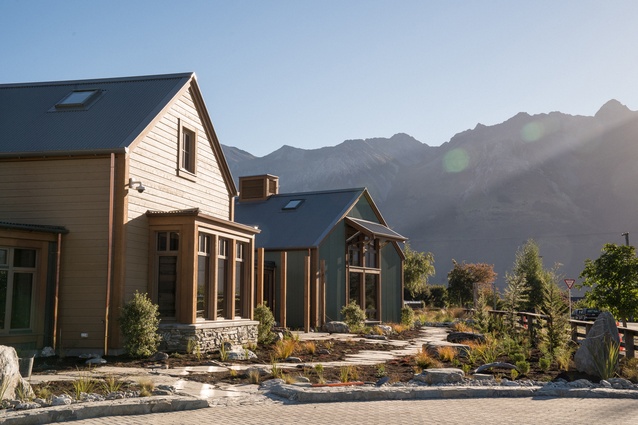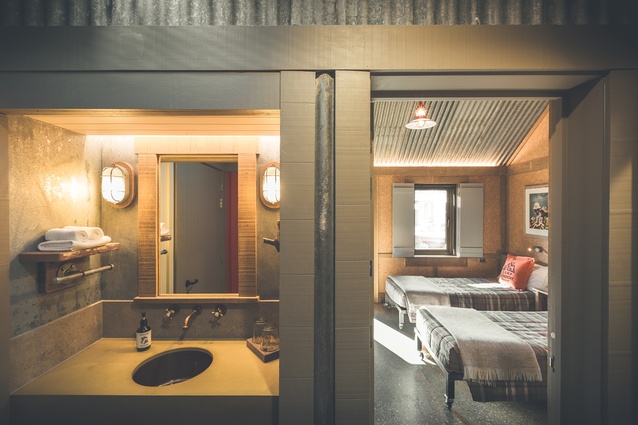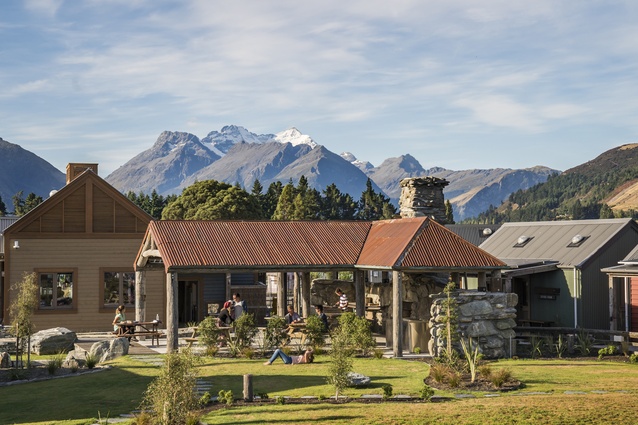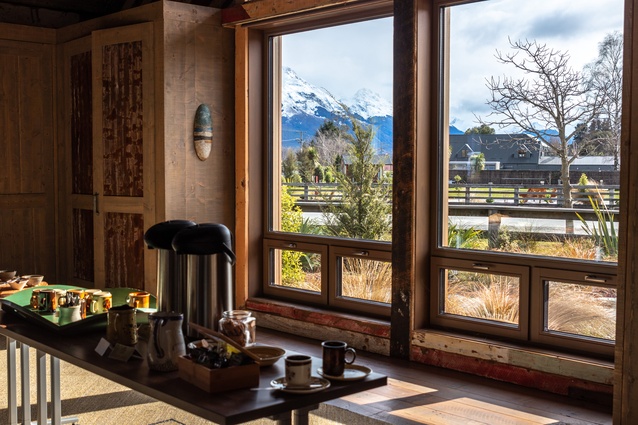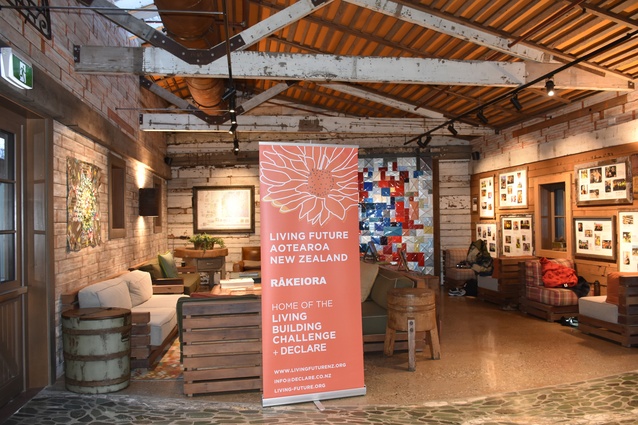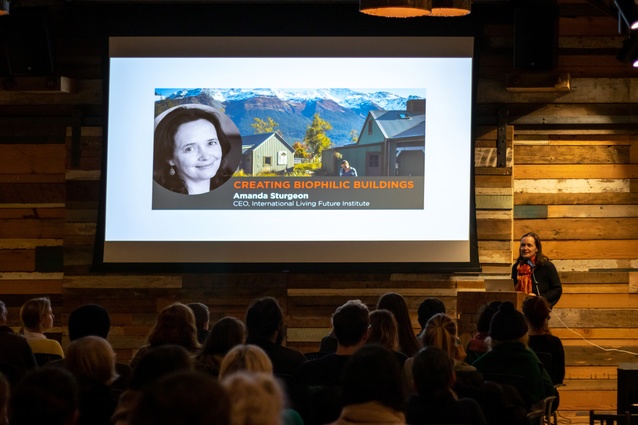Into the wild: Oceania Biophilia Summit
Camille Khouri reports back from the inaugural Oceania Biophilia Summit, which took place from 5-7 August in Glenorchy.
Glenorchy is the quintessential location for a summit about Biophilia. When looking into the practice of creating stronger connections between the natural world and the built environment – for the benefit of human health and happiness, sustainability, and empathy between humans and other living things on Earth – it helps to be surrounded by natural beauty. The small town at the top of Lake Wakatipu is almost exhaustingly beautiful, with its tall peaks, windswept lakefront, clear alpine streams, as well as colourful houses, quaint shacks, and friendly, out-of-the-box locals.
Furthermore, Camp Glenorchy is the quintessential venue for hosting a Biophilia Summit. The building was designed, built and is operated using the philosophies of the Living Building Challenge (LBC). It opened its doors to guests in March 2018 and is monitoring its energy use and working towards achieving certification for LBC. It is also registered under the Net Zero Energy Building (NZEB) Certification pathway, with the building’s energy needs supplied by an on-site solar farm.
Waste, including from the toilets, is composted and used on site in the landscaped gardens. Water use is minimised and monitored, and rainwater is collected from the rooftops. Greywater passes through the constructed wetlands on site and is reused for irrigation. This is to name a few of the many energy, waste and water saving measures implemented here.
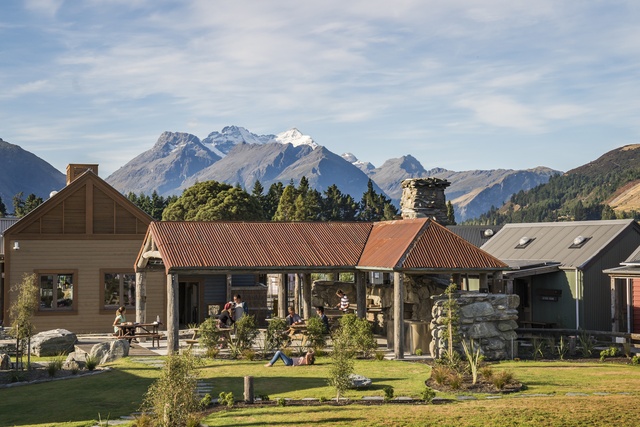
Aside from its systems, which use a combination of technology and clever design, the buildings that make up Camp Glenorchy are also beautiful, which is one of the requirements, or ‘petals’, of the LBC. They make use of local, natural materials, such as a driftwood-clad wall in the Humboldt Room (where events like this are predominantly held) and a Scheelite stone shelter outside, where guests can sit by the fire. Timber salvaged from the Christchurch earthquakes makes up a good deal of the wall linings. Artwork, sculptures and installations from local and international artists and designers can be enjoyed both inside and outside the buildings.
The summit, run by Living Future Aotearoa New Zealand and the Living Future Institute Australia, is hoped to be the first of many, with a date for next year’s event near Sydney already in attendee’s diaries. There were 29 people in attendance this year, with job titles that ranged from architects and engineers, to health sciences professionals and technicians.
After some introductions and a hearty dinner the night before, the party got down to business on the morning of the 6th August, beginning with a presentation from award-winning, US-based architect Amanda Sturgeon, who is the CEO of the International Living Future Institute and author of Creating Biophilic Buildings. Amanda spoke three times over the course of the summit, and each presentation went deeper into the concept of biophilia and how it can be used in a practical sense to create beautiful, green and healthy living buildings.
She launched her book in a public event the evening of the 6th August, which brought the population of Glenorchy out of the woodwork, as well as some visitors from Queenstown. Her presentation examined key examples of LBC buildings around the world, which also appear in her book, including our very own Te Kura Whare.
She spoke of biophilia as a “distinctive bond between human beings and living systems” and lamented the fact that we, as part of nature, feel the need to ‘reconnect’ with it. However, since so many of us now live in cities, it is a fact for many humans that wilderness experiences are not available in our everyday lives.
“And for those of us who are able to get out into the wild, we still see it as separate to our everyday life,” says Sturgeon. “Many of our buildings could be anywhere – there is no connection to place. We need to take a holistic approach to creating change in this area, to locate buildings within the stories of their sites.”
One of Amanda’s key points, which was referred to throughout the summit, was a statistic regarding healthcare. In hospital rooms with a view to the outdoors, it has been found that patients request 30 per cent less pain medication and have generally shorter stays. This example shows the importance of a connection to place for human beings, and in a later presentation, Amanda showed an image of a hospital in Singapore where this idea has manifested, with landscaped outdoor waiting areas and greenery all through a central atrium.
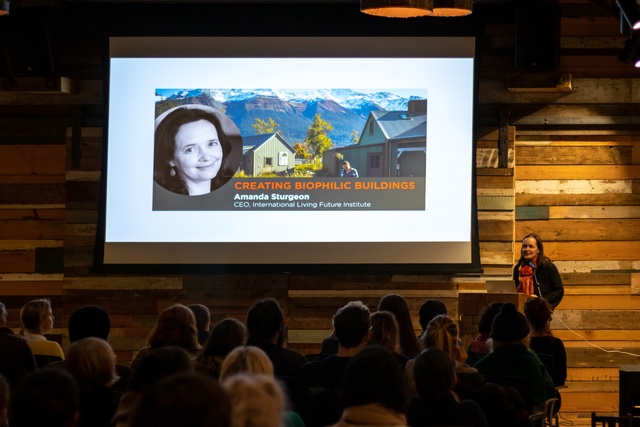
She also spoke about the need for lighting to be varied, like it is in nature. Dappled light, changing over the course of the day, reflected light can all be emulated indoors to ensure an environment that is connected to the world outside. The same goes for air: uniform, stale air is not good for us. Where possible, passive ventilation and natural air flow is required for happy, healthy humans.
On the final morning, Amanda presented the website that she and her team have been working on in collaboration with Google. The ILFI Biophilic Tool Kit is a guide to implementing biophilic design for the LBC. It will be launched in the next few weeks.
David Trubridge was an engaging and emotive speaker. He also talked about the disconnect between nature and humans. He blames this on the advent of farming, which caused a discord between us and the rest of nature, as we started to believe we could conquer it.
He was critical of buildings such as the Amazon headquarters, which he believes treats trees disrespectfully, by placing them in artificial circumstances for the sake of making a beautiful and trending interior. While most humans rely on parks for their necessary dose of nature, Trubridge likened this to the trees in the Amazon HQ - they are ‘like animals in a concrete pen’ and can’t behave as they are supposed to.
“Totally connected, old growth forest, is life,” he says, and spoke about leaving the trail and entering true wilderness. “A trail is a safe return – it will lead you back to the car. When you leave the trail, you have to think a bit more and make decisions about your environment.”
His idea of getting further into the wilderness to gain inspiration for truly living buildings was taken to heart by many at the summit. There was a call to rethink materials used and to look back at the traditional buildings created by indigneous peoples around the world as examples of true sustainability.
Trubridge also spoke about the two sides of the brain and how humans have been leaning too heavily on the left, which is about logic, and how we must rebalance ourselves. He spoke of the creative process as a continuum, with the words ‘art’, ‘design’ and ‘craft’ being verbs, not nouns. Again, looking further within, through wilderness experiences, was his solution to the problem of ‘quick wit designs’, in which people create things for the sake of being clever, without a lot of thought being placed on the work.
A walk around Glenorchy was on the schedule following Trubridge’s first presentation. He suggested that we set off alone and with phones switched off, and leave the trail for a true connection with nature, to go ‘deeper’. Undertaking this quite simple task had the effect of leaving me with a sense of calm and understanding that was both surprising and inspiring.
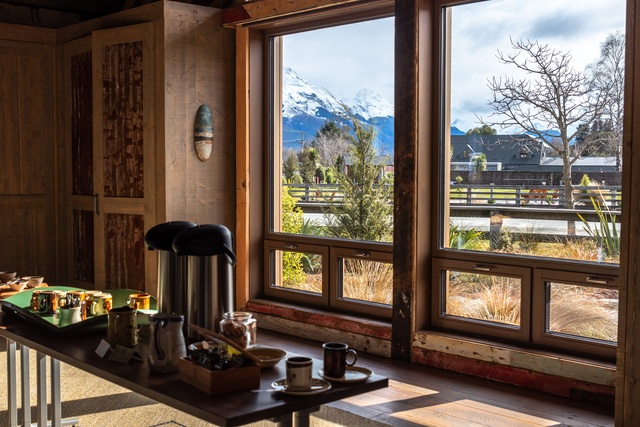
Our next speaker on the 6th was Leslie Van Gelder. Originally from New York, Van Gelder has lived in Glenorchy for 11 years. She has a PHD in Place Studies, a topic that was invented especially for her, and is both an archeologist and a conservationist. She spoke about the history of the Earth, dating back to over 27,000 years ago when the handprint stencils on the walls of the Gargas Cave in France are thought to have been painted. These people had a place-oriented worldview, Van Gelder explained, and rather than seeing time as linear, they saw it as a spiral. Everything comes back, and therefore, you have to look after and respect the here and now.
“The view of time as linear has been our downfall,” she says, “and caused us to have an apocalyptic worldview that is detrimental to our environment and our state of mind.”
She then went on to talk about agency, giving the example of the Kakapo, which has come back from the brink of extinction through the agency of a small Kakapo recovery program in Dunedin. “Size doesn’t matter, because any amount of agency creates hopefulness,” she says, reminding the attendees that we can make a difference in our world through thoughtful work and words.
The morning of the 7th was a chance to look at some practical examples of biophilic design and to get down the details of how to implement these in practice.
For example, Scott West from Frasers Property in Melbourne presented on a project currenting being developed called Burwood Brickworks. This will be the first shopping precinct created using LBC philosophies. It is a mixed-use zone that includes residential and commercial spaces and looks to be a far cry from another Westfield mall, with planting used for sunscreening, fresh air ventilation and an urban farm on the rooftop of the shopping mall. It is due to be finished in December 2019.
The first ever Oceania Biophilia Summit was packed to the brim with food for thought and calls to action. The experience and learnings gained here were made even more wonderful by the stay at Camp Glenorchy, with so many interesting and interested people. I left the summit feeling ready to reestablish my connections with the world around me.
To anyone who is able to attend the event in Sydney next year, I highly recommend it. The time is nigh to make a change to the status quo and this event will empower you with the knowledge and inspiration to go ahead and do it.

